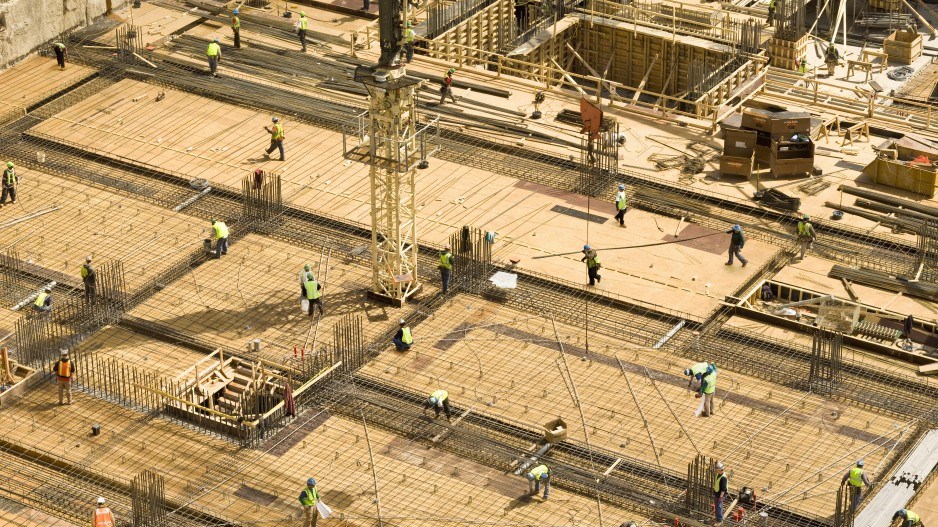Construction in B.C. had a better year in 2022, as the economy gradually emerged from the lingering effects of the COVID-19 pandemic.
The prospects for 2023 are mixed, however. An unscientific canvass of construction officials in B.C. and the rest of Canada suggest the industry is facing similar challenges and opportunities across the country that make it, on balance, cautiously optimistic.
“The past year has been one for the books,” said Dave Baspaly, president of the Council of Construction Associations BC. “We’re proud of the response of the industry and the province. Everyone has made an effort to get construction back on track.”
Chris Atchison, president of the BC Construction Association (BCCA), also sounded an optimistic note.
“There’s still steady demand for construction services in B.C.,” said Atchison. “And many projects are in the queue.”
Helen Goodland, principal and head of research and innovation at SCIUS Advisory Inc. in Vancouver, said a sign of better times is that “we’ve finally realized that building housing is a good thing.”
“The B.C. government realizes that mass timber is a technology in which we can be a world leader,” said Goodland. “Thanks to such initiatives as the Mass Timber Action Plan, mass timber is putting B.C. at the forefront of construction technology.
“Suddenly, mass timber is everywhere. It shows what can be done with the right combination of effort by government and industry.”
The construction industry’s successes notwithstanding, it has some serious problems to deal with.
Some of these challenges originate in the Canadian and international economies, some in legislation and regulations and some in construction culture.
“Many contractors are more vulnerable financially than they’ve ever been,” said BCCA’s Atchison. “They have bills to pay and families to feed and they’re not getting paid on time.”
What’s needed, he says, is provincial prompt payment legislation. Unlike their counterparts in the United Kingdom and in many U.S. states and Canadian provinces, B.C. contractors lack such legal protection.
The 2019 Builders Lien (Prompt Payment) Amendment Act would have required an owner to pay a contractor within 28 days of receiving a “proper invoice.”
It would have also required contractors to pay their subcontractors within seven days of receiving payment from a project owner.
The legislation did not pass, however, leaving the industry feeling vulnerable.
“Without prompt payment legislation, many contractors won’t be around this time next year,” said Atchison.
Goodland says construction needs pick up its pace of innovation in order to meet challenges such as climate change.
“There’s a resolute resistance to change by the B.C. construction industry,” said Goodland, who studies the application of technology in construction. “It’s not modernizing fast enough.”
Goodland cites the example of the adaptive reuse of existing buildings.
“We’re entering a period of material price volatility and unreliable supply,” said Goodland. “So it’s a good idea to extend the lives of existing buildings, instead of continuing to build new ones.”
To put B.C.’s situation in a larger context, BIV talked to construction officials in other parts of Canada.
Ken Gibson, executive director of the Alberta Construction Association, says the most significant developments in Alberta in 2022 were the recent passing of prompt payment legislation, and the willingness of the current provincial government to work with the construction industry.
On the other hand, the industry faces inadequate supplies of material and labour.
Bill Black, president and chief operating officer of the Calgary Construction Association, says the biggest thing on construction’s mind in Alberta is the upcoming provincial election in May 2023.
“Whoever wins, the NDP or the United Conservative Party, there will be work for the construction industry,” said Black. “I hope the work will be slow and steady, not boom and bust.”
Chris Lorenc, president of the Manitoba Heavy Construction Association, says the new Winnipeg mayor and council and the Manitoba provincial government are both taking steps to make the economy grow.
“And there’s renewed interest in resource development in northern Manitoba and enlarging the Port of Churchill,” said Lorenc.
Mary Van Buren, president of the Canadian Construction Association,
says the No. 1 problem Canadian construction faces is a continuing labour shortage.
“It’s become a crisis,” said Van Buren.
Because there aren’t enough available workers in Canada, they have to be recruited from outside the country.
“The immigration system in Canada works on the points system, so that people with more education get more points,” said Van Buren. “But construction doesn’t need PhDs. We need to have the system re-worked and the Temporary Foreign Worker Program updated.”
This article was first published in BIV's print edition. For first access to print content, become a BIV subscriber.



